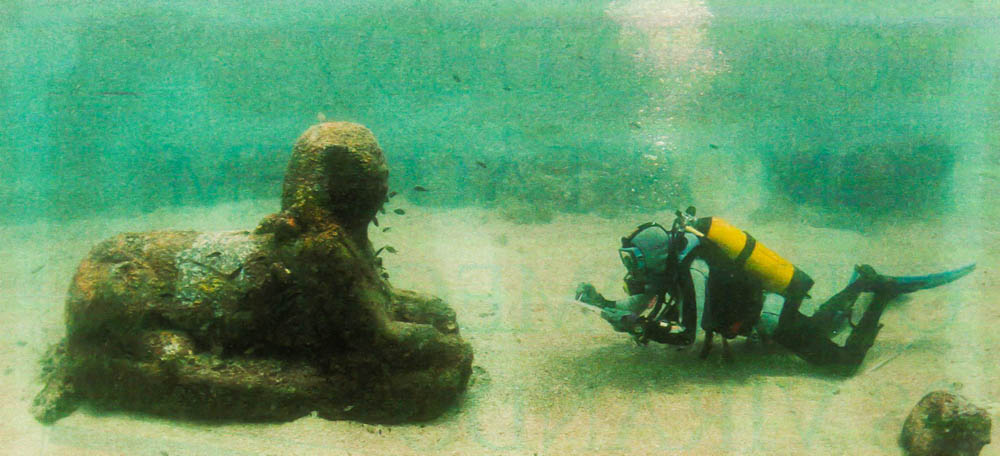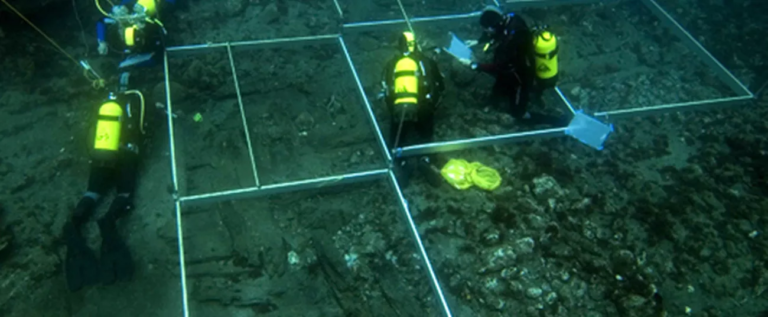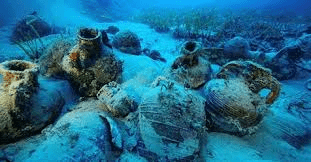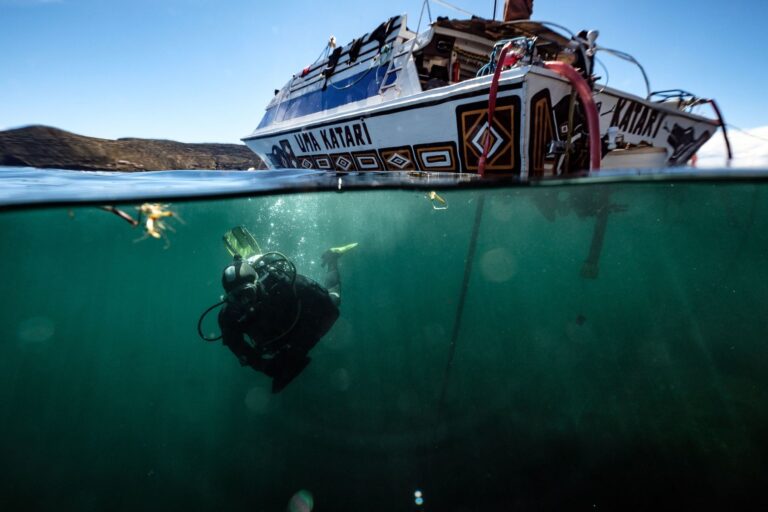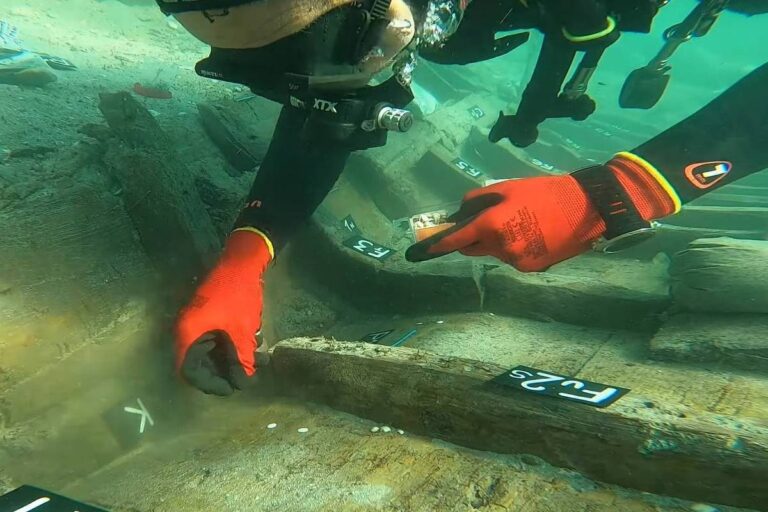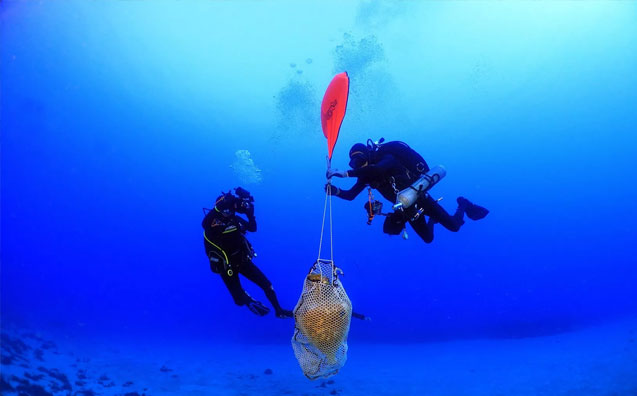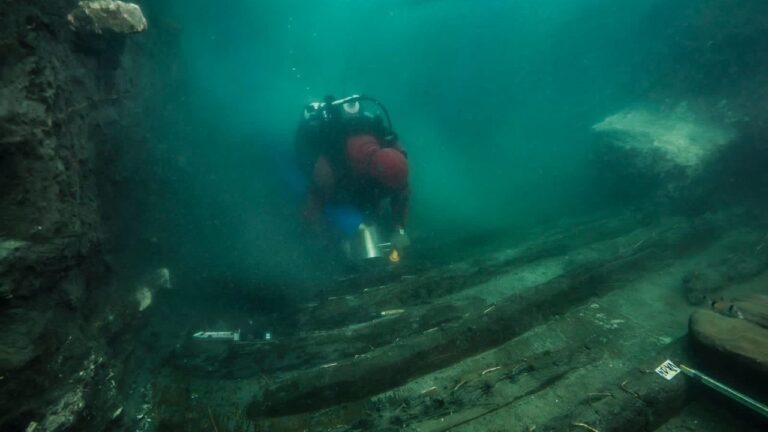Exploring the Wonders of the Deep Sea with Cutting-Edge Technology
In this blog post, we will take a fascinating journey into the mysterious depths of the ocean as we explore the wonders of the deep sea. The deep sea, which encompasses the vast and uncharted regions of the ocean floor, holds unparalleled beauty and countless secrets waiting to be uncovered. This awe-inspiring world has captivated scientists and researchers for centuries, driving them to push the boundaries of exploration. One of the key driving forces behind these groundbreaking discoveries is the use of cutting-edge technology.
Modern deep-sea exploration relies heavily on advanced technology to navigate and explore this challenging environment. Cutting-edge technology plays a vital role in overcoming the many obstacles that scientists face as they venture into the depths. By harnessing the power of innovation, researchers are able to delve deeper and gain unprecedented knowledge about the underwater realm.
Table of Contents
The Importance of Exploring the Deep Sea
Deep sea exploration holds immense significance for scientific advancements and understanding our planet’s most mysterious and unexplored frontier. By venturing into the depths of the ocean, researchers have the opportunity to uncover invaluable discoveries and gain insights into the Earth’s history and its diverse ecosystems.
The deep sea is home to a vast array of unique organisms, many of which have yet to be discovered. By studying these organisms, scientists can learn more about the evolutionary processes that have shaped life on our planet. Furthermore, deep sea exploration allows us to better understand the interconnectedness of marine ecosystems and how they contribute to the overall health of our planet.
Exploration of the deep sea also has significant implications for various scientific disciplines. Oceanography, marine biology, and geology are just a few examples of fields that benefit from deep sea exploration. By studying the deep sea, scientists can gain a comprehensive understanding of the planet’s geological history, its climate patterns, and the impact of human activities on these delicate ecosystems.
Moreover, deep sea exploration plays a crucial role in the development of new technologies and innovative engineering techniques. As researchers push the boundaries of what is possible, they continuously develop cutting-edge technological advancements to overcome the challenges of exploring such extreme environments. From robotic submersibles to advanced imaging systems, these technologies not only enable us to explore the deep sea, but also have numerous applications in other industries and scientific fields.
In conclusion, exploring the wonders of the deep sea with cutting-edge technology is of paramount importance for scientific advancements and our understanding of the world we live in. By delving into the mysteries of the deep sea, we have the potential to make groundbreaking discoveries, gain insightful knowledge, and develop technological innovations that benefit both scientific research and society as a whole.
Challenges Faced in Deep Sea Exploration
Deep sea exploration presents numerous challenges to scientists and researchers, as they strive to unravel the mysteries hidden beneath the ocean’s surface. One of the primary challenges faced in this field is the extreme conditions that exist in the deep sea, including high water pressure and low visibility.
The deep sea is characterized by immense water pressure, exerting a force of several tons per square inch. This poses a significant challenge for researchers and their equipment, as they must design and employ technology that can withstand such tremendous pressure while still performing effectively. Additionally, the lack of natural light in the deep sea results in poor visibility, making it difficult for researchers to observe and study their surroundings.
In addition to these extreme conditions, deep sea exploration also presents logistical challenges. The vast depths and remoteness of the deep sea make it difficult and expensive to access. Scientists must utilize sophisticated equipment, such as submersibles and remotely operated vehicles (ROVs), to reach and explore these depths. These technologies enable researchers to navigate the treacherous conditions of the deep sea and gather valuable data and samples.
Moreover, deep sea exploration also presents challenges related to sampling and data collection. Due to the extreme environments and limited accessibility, it is often challenging to collect samples and data from the deep sea. However, advancements in technology have led to the development of advanced sampling techniques that allow scientists to collect samples efficiently and study them in-depth. These innovative tools enable researchers to gain insights into the biodiversity and geology of the deep sea.
Overall, exploring the wonders of the deep sea with cutting-edge technology requires overcoming a range of challenges. From extreme conditions like high water pressure and low visibility to logistical hurdles and sampling difficulties, scientists and researchers are continually adapting and innovating to explore and understand this mysterious and largely unexplored realm. These challenges, though daunting, reinforce the importance of pushing the boundaries of technology and knowledge in the pursuit of uncovering the secrets of the deep sea.
Cutting-Edge Technologies Used in Deep Sea Exploration
Submersibles and Remotely Operated Vehicles (ROVs):
Cutting-edge submersibles and remotely operated vehicles (ROVs) are crucial tools that enable researchers to explore the depths of the sea. These advanced technologies are designed to withstand the extreme conditions of the deep sea, allowing scientists to conduct detailed investigations in areas that are otherwise inaccessible. Equipped with high-resolution cameras and manipulator arms, submersibles and ROVs provide real-time visuals of the underwater world, capturing stunning imagery of marine life and underwater geological formations.
Sonar Mapping and Imaging Systems:
Sophisticated sonar mapping and imaging systems play a vital role in deep sea exploration. These technologies utilize sound waves to map the seafloor and underwater structures with remarkable accuracy. By emitting sound pulses and measuring the time it takes for the echoes to return, sonar systems create detailed images of the underwater terrain. This innovative technology has contributed significantly to the discovery of new species and the understanding of complex underwater ecosystems. Additionally, sonar mapping helps identify potential locations for further exploration and investigation.
Underwater Drones:
Autonomous underwater vehicles (AUVs), also known as underwater drones, have revolutionized the field of deep sea exploration. These cutting-edge devices are capable of collecting and transmitting vast amounts of data and imagery, providing valuable insights into the deep sea environment. Equipped with advanced sensors and imaging systems, underwater drones can navigate autonomously and survey large areas of the ocean floor. Their ability to withstand harsh conditions and explore areas at great depths ensures that researchers can gather crucial information without endangering human lives.
Advanced Sampling Techniques:
Advancements in sampling techniques have greatly enhanced our understanding of the deep sea. Scientists now have access to innovative tools specifically designed to collect samples from the ocean floor. These tools range from specialized grabbers and sediment samplers to core-drilling equipment that can extract cylindrical samples from the seabed. Once collected, these samples undergo rigorous analysis and research, aiding in the study of deep sea ecosystems, geology, and chemical processes. These cutting-edge sampling techniques enable scientists to obtain valuable data without causing significant disturbance to the delicate marine environment.
As deep sea exploration continues to captivate our curiosity, these cutting-edge technologies will continue to play a crucial role in uncovering the mysteries of the deep sea. From submersibles and ROVs to sonar mapping systems, underwater drones, and advanced sampling techniques, researchers rely on these tools to explore and document the wonders that lie beneath the ocean’s surface. By harnessing the power of technology, scientists are pushing the boundaries in their quest to unravel the secrets held by the deep sea.
Recent Breakthroughs and Discoveries
In recent years, cutting-edge technology has revolutionized deep sea exploration, leading to remarkable breakthroughs and discoveries. These advancements have unveiled a whole new world beneath the waves, providing valuable insights into marine life, geology, and ecosystems.
One of the most significant breakthroughs made possible by cutting-edge technology is the discovery of new marine species. With the help of sonar mapping and imaging systems, scientists have been able to explore previously uncharted areas of the deep sea and document previously unseen organisms. These discoveries have expanded our understanding of marine biodiversity and the intricacies of underwater ecosystems.
Moreover, advanced sampling techniques have allowed researchers to delve even deeper into the mysteries of the deep sea. By using innovative tools to collect samples, scientists have been able to study the physical and chemical properties of the deep sea, enabling groundbreaking research in understanding geological formations and processes. These findings have implications for understanding the history and evolution of our planet.
In addition to marine life and geology, cutting-edge technology has also provided valuable insights into underwater ecosystems. For instance, the use of remotely operated vehicles (ROVs) and autonomous underwater vehicles (AUVs) has allowed scientists to observe and study deep-sea hydrothermal vents. These vents, previously unknown, are home to unique ecosystems that thrive in extreme conditions. Studying these ecosystems has provided crucial knowledge about sustainable energy sources and the potential for the existence of extraterrestrial life.
In conclusion, recent breakthroughs and discoveries in deep sea exploration, made possible by cutting-edge technology, have transformed our understanding of the deep sea. From newly discovered marine species to insights into geological formations and underwater ecosystems, the wonders of the deep sea continue to amaze and fascinate us. As technology continues to advance, we can only anticipate further remarkable discoveries and an even deeper understanding of the mysteries hidden beneath the ocean’s surface.
Future Prospects in Deep Sea Exploration
With the continuous advancements in technology, the future of deep sea exploration holds immense potential. The integration of cutting-edge technology is expected to play a significant role in unlocking the mysteries of the deep sea and expanding our understanding of this fascinating realm.
One of the key areas that will shape the future of deep sea exploration is autonomous underwater vehicles (AUVs). These sophisticated underwater drones are equipped with advanced sensors and imaging systems, allowing them to navigate the depths of the ocean autonomously. AUVs have the potential to revolutionize deep sea exploration by enabling researchers to collect data and imagery from remote and unexplored areas of the ocean floor. The development of more efficient and durable AUVs will undoubtedly enhance our ability to uncover new discoveries and gain a deeper understanding of the underwater world.
Another promising area of future prospects lies in the advancements of underwater robotics. The use of remotely operated vehicles (ROVs) has already proved instrumental in deep sea exploration, allowing scientists to explore depths that were previously inaccessible. As technology continues to advance, we can anticipate the development of more agile and versatile ROVs, equipped with enhanced imaging and sampling capabilities. These robots will not only assist in the exploration of the deep sea but also aid in the preservation and conservation of delicate marine ecosystems.
The future of deep sea exploration also holds exciting possibilities in the field of sonar mapping and imaging systems. By utilizing advanced sonar technology, scientists will be able to create detailed maps of the seafloor and underwater structures with greater accuracy and resolution. This, in turn, will facilitate the discovery of new species, ecosystems, and geological features. Sophisticated imaging systems will allow us to capture breathtaking visuals of the deep sea, providing a window into a world that has long remained hidden from human eyes.
Furthermore, the development of more reliable and efficient sampling techniques will significantly contribute to future deep sea exploration. Innovative tools and technologies are being designed to obtain samples from extreme depths, allowing scientists to study the diverse organisms and geological formations found in the deep sea. These samples serve as invaluable resources for research, enabling us to unravel the mysteries that lie beneath the ocean’s surface.
In conclusion, the future of deep sea exploration is full of potential advancements and possibilities. The integration of cutting-edge technology, such as autonomous underwater vehicles, underwater robotics, and advanced imaging systems, will enhance our ability to explore the deep sea and unravel its wonders. With each new breakthrough and discovery, we will gain a deeper understanding of marine life, geology, and ecosystems, ultimately leading to scientific advancements and the preservation of our planet’s most enigmatic and unexplored environments.
Conclusion
In conclusion, the exploration of the deep sea is of utmost importance for scientific advancements and understanding the wonders that lie beneath the ocean’s surface. The use of cutting-edge technology has revolutionized this field, allowing researchers to delve into the depths and uncover mysteries that were once inaccessible.
Deep sea exploration holds great significance as it provides valuable insights into the diverse marine life, geology, and ecosystems of the underwater world. By studying these ecosystems, scientists can gain a better understanding of how they function and evolve, which can have implications for conservation efforts and the development of sustainable practices.
Despite the numerous challenges faced in deep sea exploration, such as extreme conditions and low visibility, cutting-edge technologies have proven to be crucial in overcoming these obstacles. Submersibles and Remotely Operated Vehicles (ROVs) enable researchers to reach great depths and explore areas that were once thought to be impossible to reach. These advanced tools allow scientists to observe and document the rich biodiversity and unique species found in the deep sea.
In addition, sonar mapping and imaging systems play a vital role in mapping the seafloor and underwater structures. By using these technologies, scientists can identify new species and ecosystems, providing a deeper understanding of the diverse life forms that inhabit the deep sea. Furthermore, underwater drones, such as autonomous underwater vehicles (AUVs), collect valuable data and imagery, allowing for more extensive exploration and research.
The use of advanced sampling techniques has also revolutionized deep sea exploration. Innovative tools are employed to collect samples from the depths, enabling scientists to study marine organisms, sediments, and minerals. The analysis and research carried out on these samples provide valuable insights into the geological processes and biological adaptations that occur in extreme deep-sea environments.
Looking towards the future, deep sea exploration holds tremendous potential for further discoveries and breakthroughs. By continuing to invest in cutting-edge technology and research, scientists can uncover new species, understand climate change impacts, and discover resources that could contribute to various industries. The role of technology in unlocking the wonders of the deep sea cannot be overstated, as it allows us to explore and appreciate the vast mysteries that lie beneath the surface of our oceans.
In conclusion, deep sea exploration coupled with cutting-edge technology is a catalyst for scientific progress and understanding the marvels hidden in the depths of our oceans. With ongoing advancements and future prospects, we can expect exciting discoveries that will continue to expand our knowledge and appreciation for the wonders of the deep sea.

